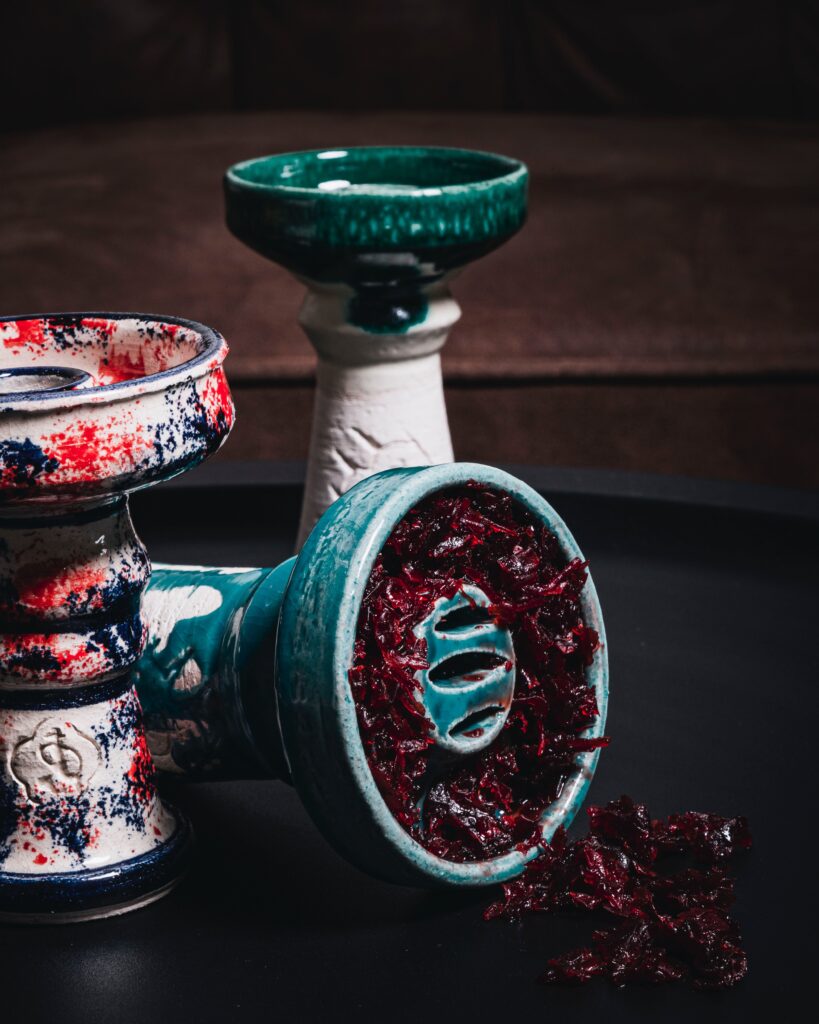Molasses is one of the oldest products in which tobacco is mainly used, and the history of making molasses goes back to ancient times. Its industry is distinguished by a rich heritage and a long history that extends through different eras and cultures around the world. Then the molasses became considered an essential part of the social and cultural heritage in many societies, as it was closely linked to social events and cultural traditions. In this article, we will discuss the following topics:
- The origins of the molasses industry and how it has evolved over time
- Stages of development of the molasses industry
- How did the methods of making molasses evolve?
- The cultural and economic effects of the molasses industry in modern times
The origins of the molasses industry and how it has evolved over time
The molasses industry is considered one of the oldest tobacco industries in history, as it witnessed tremendous development over time. However, it is not possible to confirm or determine a specific and accurate time for the beginning of the molasses industry, but it is believed, as mentioned above, that it began in the Indian subcontinent thousands of years ago. Let’s look at the origins of the molasses industry and how it has evolved throughout history:
- Old assets:
The oldest evidence found indicates that the use of molasses began in ancient India, where it was used in feasts, social occasions, and religious rites. The methods of preparing molasses at that time were based on mixing tobacco leaves with many natural ingredients and extracts such as honey and scented herbs to improve its taste and aroma. Moreover, it was sometimes steamed to add distinctive aromas.
- Moving to the Middle East and North Africa:
As intercultural cultural and commercial exchanges have increased, the practices of using molasses as a smoking substance have moved to other regions of the world, such as the Middle East and North Africa. The Arab regions were renowned for preparing and smoking the molasses, and then the molasses became part of the culture of coffee and hospitality in those areas.
- Prevalence of honey in Europe and Central Asia:
After increasing the frequency of intercultural and commercial communication between nations, the molasses spread to the regions of Europe and Central Asia. Then some countries in Europe are producing the molasses and exporting it to other parts of the world.
- Developments in modern times:
In modern times, the molasses industry has undergone significant transformations, as the techniques for its preparation have evolved and its production process has moved to industrial manufacturing using machines. The quality of the molasses has been improved as a smoking product, with multiplicity and variation in the kinds of molasses as well as adding new flavors and innovative ingredients to attract different tastes.
- Preserving traditions and heritage:
Despite the tremendous technological developments, many societies maintain traditions and traditional methods of preparing and making molasses. There are still small workshops and factories that produce molasses using traditional manual methods, with the aim of preserving the traditional spirit of this industry.
The most important cultural and economic effects of the molasses industry in modern times
The molasses industry certainly has important cultural and economic implications in modern times. These effects are reflected in several aspects:
Cultural monuments:
- Culture and Heritage:
The molasses industry has reflected on the cultural heritage of many societies around the world, becoming an integral part of it. In some cultures, molasses is considered a kind of celebration and socialization in the smoking sessions of the hookah.
- Folklore and the arts:
The role of molasses in folklore and the traditional arts of many cultures is clearly and attractively reflected, as it has sometimes inspired artists, writers, and poets.
Economic implications:
- Jobs and work:
The area of the molasses industry provides significant jobs in many States, in many areas both in tobacco cultivation and in the processing of ingredients which molasses is made from, and in the molasses industry itself. The industry is an important source of income for many individuals and families.
- Exports and trade:
Molasses is an important product exported to and from many countries around the world, and this will contribute to boosting the national economy and increasing revenues. Exports to different markets continue around the world, where the molasses is very popular in many cultures
- Consumption and government incomes:
The consumption of molasses affects the local economy through taxes and duties paid on import and export operations. Thus, Governments generate good returns from these taxes.
- Investments and innovation:
The continuous molasses industry encourages sustained development and innovation in the molasses industry. This sector is an attractive element for investors’ interest in participating in innovation, improving product quality, and expanding production lines.
Stages of development of the molasses industry
The molasses industry has evolved continuously throughout history, with techniques and practices evolving in its preparation and manufacture. Here we will explain the main stages of the development of the molasses industry:
- Ancient history:
Initially, the molasses industry was limited to using natural tobacco leaves and adding simple ingredients such as honey and herbs to improve flavor and smell. This phase relied mainly on manual techniques and traditional methods of preparation.
- International trade and cultural exchange:
With international trade and intercultural cultural exchange, the molasses industry has moved to other parts of the world. The use of molasses has spread to the Middle East and North Africa, and new technologies and practices have moved to these regions.
- Industrial Revolution:
The global industry underwent dramatic changes during the 18th and 19th Century Industrial Revolution, which also included the molasses industry. The improvement of techniques has had a positive impact on increased production efficiency, resulting in greater prevalence and availability.
- Technical Innovations:
As technology progressed in the twentieth century, the molasses industry experienced new technical innovations. Drying and storage processes, as well as packaging processes, have been improved and developed, facilitating production processes and improving product quality.
- Variety of kinds of molasses:
The increase in the multiplicity of types of molasses over time has become more common. New types of molasses have emerged with new flavors such as fruit, mint, chocolate, etc., as well as traditional molasses. These types are designed to attract different segments of consumers and meet all their tastes.
- Health standards and legislation:
In modern times, governments have given clear and significant attention to regulating the molasses industry, imposing health standards and legislation with a view to reducing its health risks. Governments have organized the production of molasses and imposed control over the ingredients and materials used in the molasses industry.
- Global Marketing and Expansion:
With remarkable technological advances, the molasses industry has spread all over the world. Companies use social media and e-marketing to promote their products and access to major global markets.
How the operations of the molasses industry have evolved
The molasses industry has undergone a remarkable development as the techniques and practices of its preparation and manufacture have improved. We will give you some key stages of the development of the operations of the molasses industry:
- Old manual processes:
The operations of the molasses industry were initially based mainly on simple manual processes. By collecting tobacco leaves manually, and then drying them in the sun or using traditional ovens. Then mix tobacco with other ingredients manually to get the molasses
- Traditional techniques:
Traditional techniques used in the molasses industry have been developed. Processes have begun to involve the use of specific, albeit primitive, tools such as mashers to chop tobacco leaves.
- International trade and cultural exchange:
International trade and global cultural exchange have affected the operations of the molasses industry using new techniques and practices.
- Industrial improvements:
With the beginning of the Industrial Revolution, the molasses industry improved significantly. Companies started using modern machinery and equipment with the aim of increasing production efficiency and improving product quality.
- Modern technology:
The molasses industry has benefited from modern technologies and technological improvements common in modern times. Automated control and automation systems have been applied in drying, mixing, and packaging processes, facilitating the production process and making it more accurate and efficient.
- Innovations and diversity:
Companies have begun to innovate new products and diversify kinds of molasses due to increased competition in markets. Diverse ingredients and flavors have been created to meet consumers’ changing aspirations and tastes and attract wider segments of the public.
- Quality Control and Health Standards:
Quality and Health Safety have become one of the priorities of the molasses industry. Governments have applied strict quality control standards and ensure the product’s safety and conformity with health standards and environmental legislation.
How the methods of the molasses industry have evolved
The methods of making molasses have evolved throughout the ages. It began with ancient and manual traditions, then used ovens for drying, and the techniques used in the molasses industry were improved and developed during the Industrial Revolution.
In the twentieth century, the processes of the molasses industry and packaging were developed. The diversity of molasses species has increased markedly, due to the use of innovative ingredients and flavors. In modern times, modern technology and the Internet have influenced marketing, customer communication, and access to major global markets and users from different segments.
At the end of this article, the molasses industry has a long history of heritage and evolution and is part of different cultures around the world. The molasses industry will continue to be constantly renewed, evolved, and innovated to meet consumers’ changing and growing needs.

We recommend you try the luxurious Debaj Molasses, whose multiple flavors meet all tastes with attractive packaging, with different weights and sizes to meet all your needs. Also, the high concentration of the flavors of the premium Debaj Molasses is one of the best advantages the molasses is looking for by the lovers of smoking hookah, where it lasts for the longest time of pleasure and relaxation. Order Debaj Molasses now and make your times full of fun and memories memorable.


